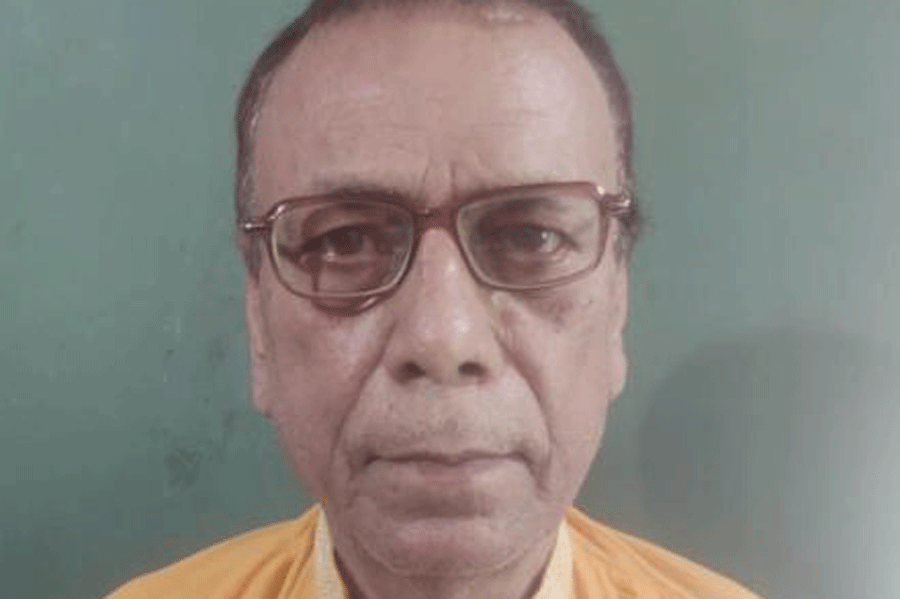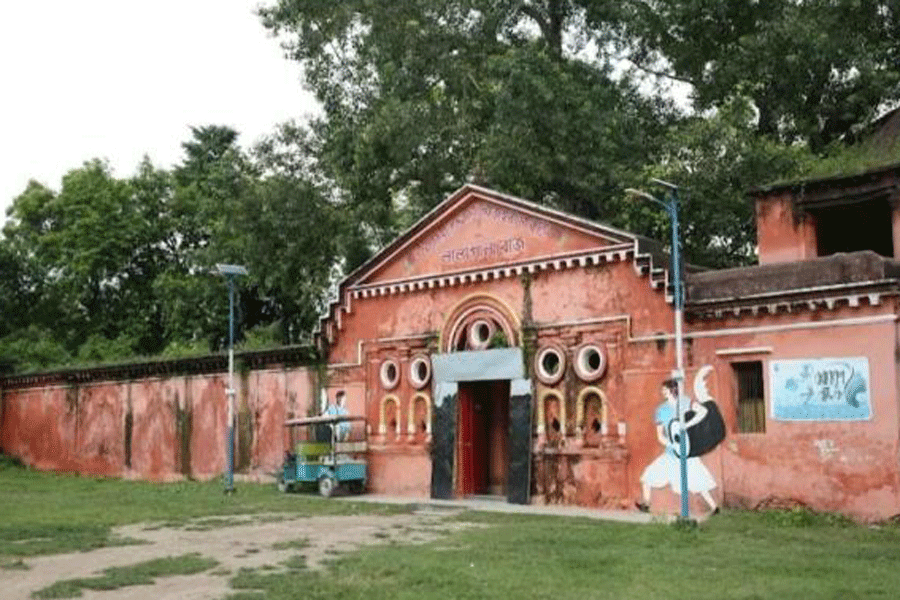Lost in the history of a remote corner of Bengal, he is what you may call a people’s historian. A retired schoolteacher of mathematics, deeply interested and invested in a specific era of India’s history. He has been honoured with the National Teachers’ Award by the President of India, and is recognised by prominent forums for his contribution to the protection and popularisation of the heritage and history of Lalgola.
This is the story of Kishan Chand Bhakat of Lalgola in Bengal’s Murshidabad district.
Bhakat has been working for years to prove that Bankim Chandra Chattopadhyay’s historical novel Anandmath is based on the novelist’s personal experience during his stay with the zamindar of Lalgola, Jogendra Narain Rai. It is also his claim that the iconic song Bande Mataram was actually inspired by a prayer at Narain Rai’s family Kali temple.
Bhakat has authored many articles in Bengali and Hindi on the subject. Academic publications based on his findings have appeared in India and abroad; some of them have acknowledged him, but most have forgotten the man.
Aconversation with Bhakat has a way of becoming a meandering journey into the history of eastern India. Lalgola is situated on the banks of River Padma. The region has seen many regimes come and go.

Kishan Chand Bhakat. Agni Prasad Bhakat
Bhakat recalls how people migrated from the western provinces to Bengal during social unrests, natural calamities and famines. That is how the forefathers of the Lalgola zamindars and Bhakat’s own ancestors came to Bengal, with thousands of others, in search of livelihood and fortune.
In the 1870s, Bankim came in contact with the Lalgola zamindars while serving as magistrate at Berhampore, says Bhakat. According to him, one December morning, as he crossed Barrack Square on his way to work in a palanquin, British army officer Lt Col Duffin stopped him and insisted he change his route — they were playing a game of cricket. When Bankim refused, Duffin assaulted him. Enraged, Bankim filed a case against him; the incident was reported in the press. The then zamindar of Lalgola, Jogendra Narain Rai, appeared as witness in his support and ultimately the British officer had to apologise in open court.
This was, however, too much for his fraternity!
Sensing the gravity of the situation, Bankim went on long leave, and the Lalgola zamindar took him to his residence for protection. During his stay there, Bankim was so inspired by the ambience of the place that he wove it into his novel.

Kali temple at Lalgola Rajbari. Agni Prasad Bhakat
When told that it was likely that the broad plot of the novel was based on a story Bankim had heard from the Lalgola zamindar — about the rebellion of Raja Fateh Bahadur Sahi of Bihar against the
British a century ago — Bhakat says the Lalgola zamindars were from the same caste as Fateh Sahi and originally hailed from Bhojpuri-speaking areas.
Bhakat recalls the association of Lalgola, Natore and others with Benares, and their association with the Sanyasi Rebellion (1772-73). He draws attention to the idols at the Lalgola Rajbari Kali temple — the destroyer of evil and dispenser of justice, Kali is represented as bound in chains in a grim ambience, representing the difficult times of British rule; while Jagaddhatri, protector of the world, glowing in bliss, reflected the aspirations of the awakened nation.
A secret tunnel from the Raj-bari, now closed, opened onto the bank of Kalkali river, dotted with ancient temples. Sanyasis congregated at its confluence with the Padma-Bhairav rivers, and Lalgola’s chief temple priest Kali Brahma Bhattacharya trained them how to fight with the British forces.
These monks spoke Bhojpuri, since their families had migrated from the Bhojpuri regions of Uttar Pradesh and Bihar as retinue for the Lalgola zamindars as well as others. Such sanyasis still visit places around; and there are Bhojpuri-speaking villages in the vicinity, according to Bhakat.
Pradip Bhattacharya, a former commissioner of Murshidabad, writes in a blog that he has verified Bhakat’s premises about the Lalgola Rajbari-Anandmath connection, and has found them credible.
Today, Lalgola has slipped into oblivion. Most of the Rajbari precincts have been taken over by the government, and the family is scattered here and there. In the run of time and furies of nature, Lalgola has been left to languish in the backyard of history.
The neighbouring Nimtita Raj-bari found its saviour in Satyajit Ray, who filmed his award-winning Jalsaghar on its zamindar Biswambhar Roy, a music lover.
Who will redeem the history of Lalgola and Yogendra Narain Rai who dared to stand against the mighty British government, and inspired Anandmath? Will someone help Bhakat, now in his 70s, compile his work for posterity?
The writer is a member of the research council of the Indian National Commission for History of Science, Indian National Science Academy, New Delhi











